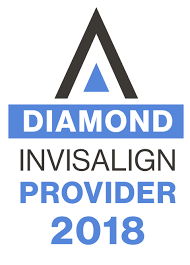Why We Need Orthodontic Appliances
Signing up for a dentofacial orthopedic treatment can be frightening when you don’t know what to expect. By learning what appliances orthodontists use and how these appliances improve our facial development, we can get a better idea of what to expect.
Dentofacial orthopedics is the area of specialization that focuses on our jaw development. This means the ideal age of treatment is when our jaws are developing, between 8 and 12 years old. Though, adults can also have treatment if they have experienced some dental changes.
Some of the reasons why we need orthodontic appliances to help our jaw development include:
- Misalignment between the teeth when we bite (malocclusion)
- An underdeveloped lower jaw
- Protrusion of upper teeth
- Overbite, where the upper front teeth excessively covers the lower front teeth
- Crossbite, where the dental arches are misaligned and some of your teeth are closer to the cheek than the corresponding lower or upper arch
What to Expect When Getting Orthodontic Appliances
Orthodontic appliances are either fixed or removable. Fixed orthodontic appliances are permanently attached to your teeth during the treatment, and removable appliances can be taken off. While removable appliances gives us flexibility, we need to be compliant and wear them consistently for best results.
It is not uncommon to feel discomfort for the first month after the appliance is in place. Adjustment gets easier with time. On average, treatment plans are 12 months long. After that, your jaw alignment will be corrected and you can now smile freely with confidence.
Different Types of Orthodontic Appliances
The type of orthodontic appliance used for treatment is different for each individual. Here the some of the common appliances used:
- Bite Corrector: A bite corrector uses permanent metal bars and enclosed springs to apply pressure to your upper and lower jaws. It is used in combination with braces and helps correct malocclusions.
- Headgear: Permanent metal bands are fixed to your upper-back teeth. A removable facebow is attached to these bands and that in turn is secured by a safety strap that goes around your head. Headgears help guide your jaw and teeth to grow into an ideal position.
- Bionator: The Bionator is a retainer that helps guide your lower jaw to grow proportionately to your upper jaw.
- Herbst® Appliance: The Herbst appliance consists of permanent metal pieces that are attached to your upper and lower molars. It is used to combat overbites by holding the lower jawbone (mandible) forward and giving you an ideal bite. It can also be used to widen your jaw using expansion screws.
- Mara Appliance: Mara appliance is used to push your mandible forward to reduce an overbite. Crowns are placed over your top and bottom molars I and are connected with a metal elbow that applies pressure to align your jaws.
- Palatal Expansion: Palatal Expansion attaches to the upper-back teeth. It is used to widen the jaw and correct crossbites. This appliance can be either fixed or removable.
Now that you are more familiar with the appliances, you can visit us Bayside Dental & Orthodontics to proceed with your treatment plan!



